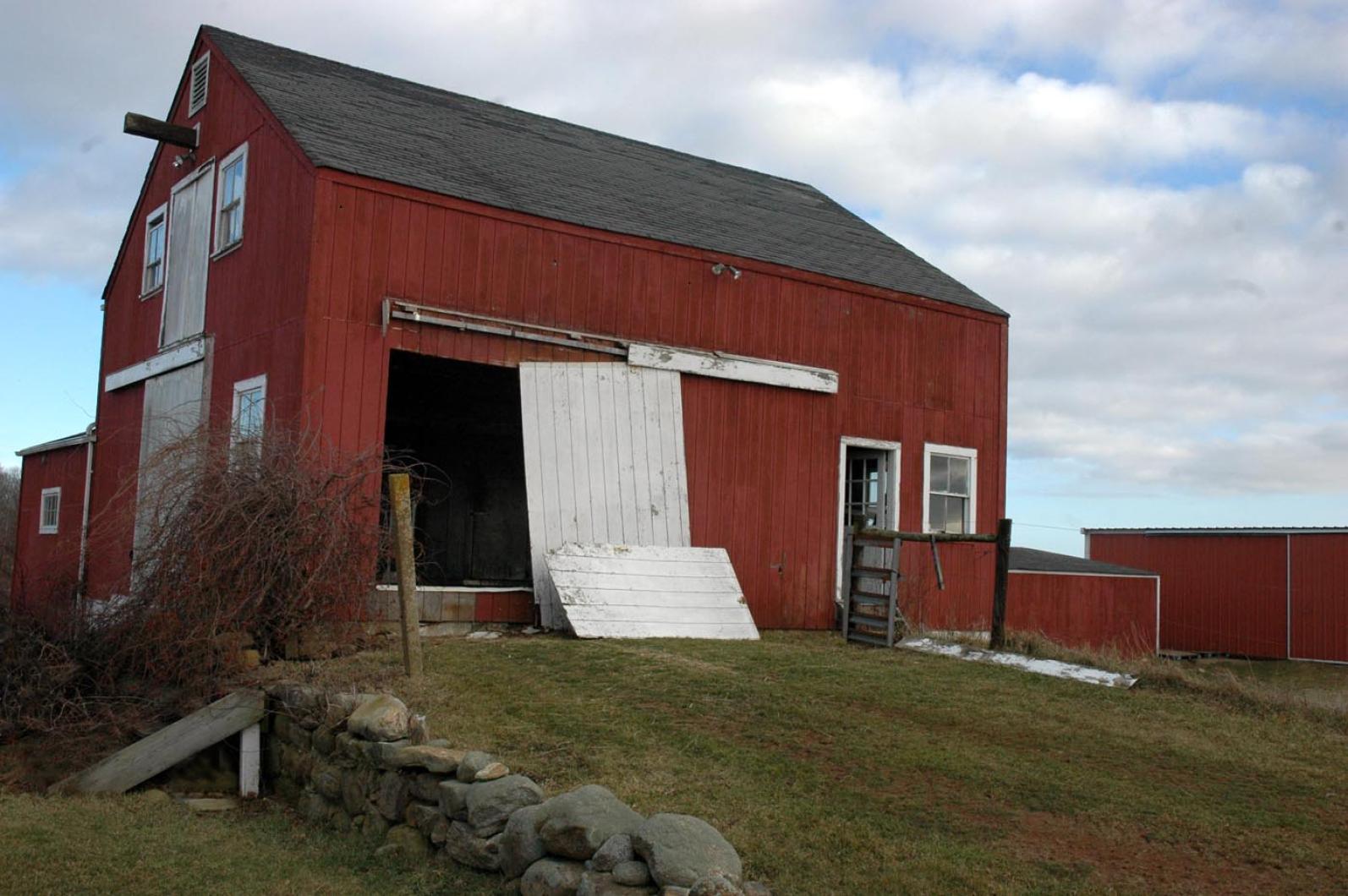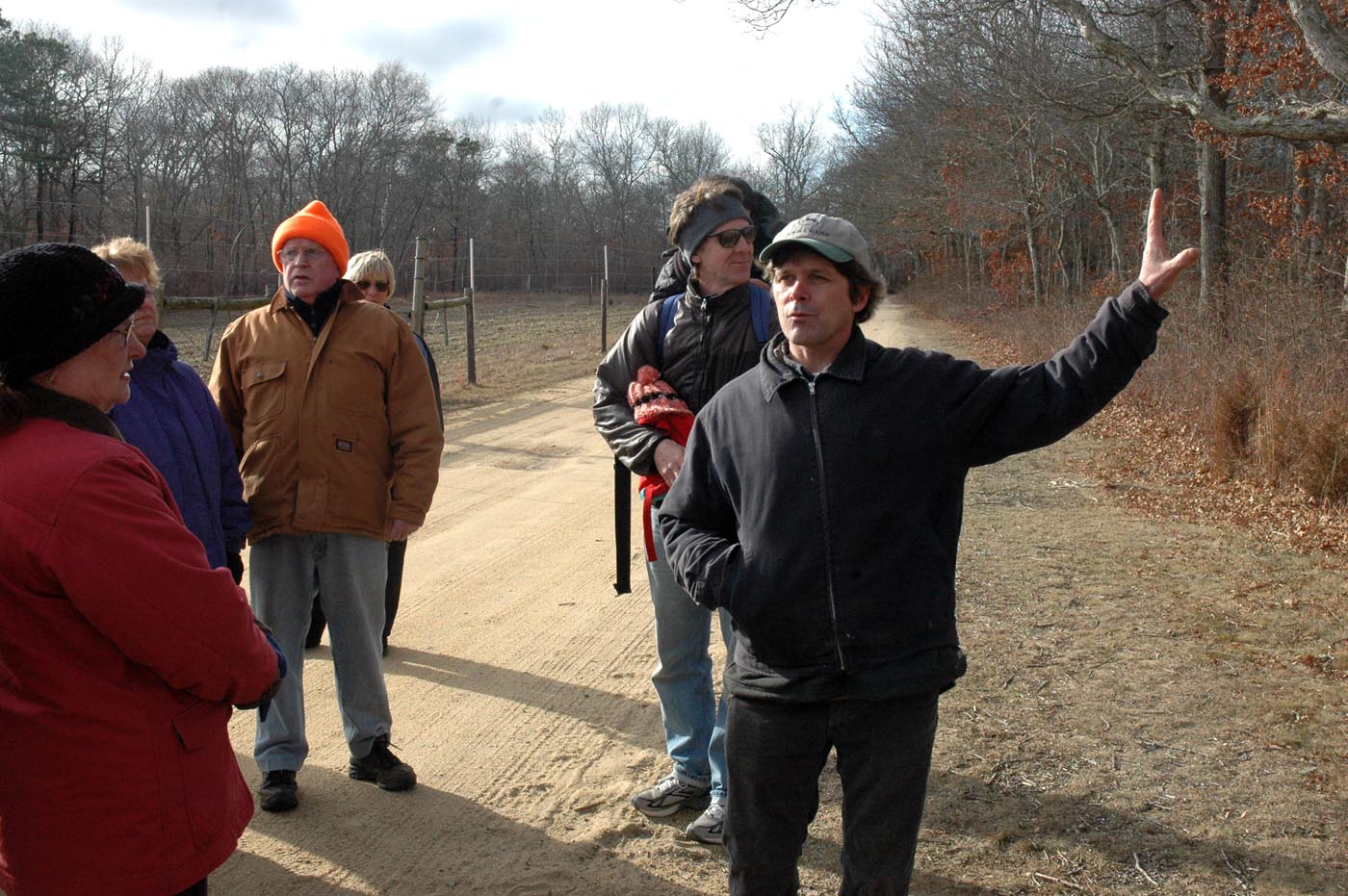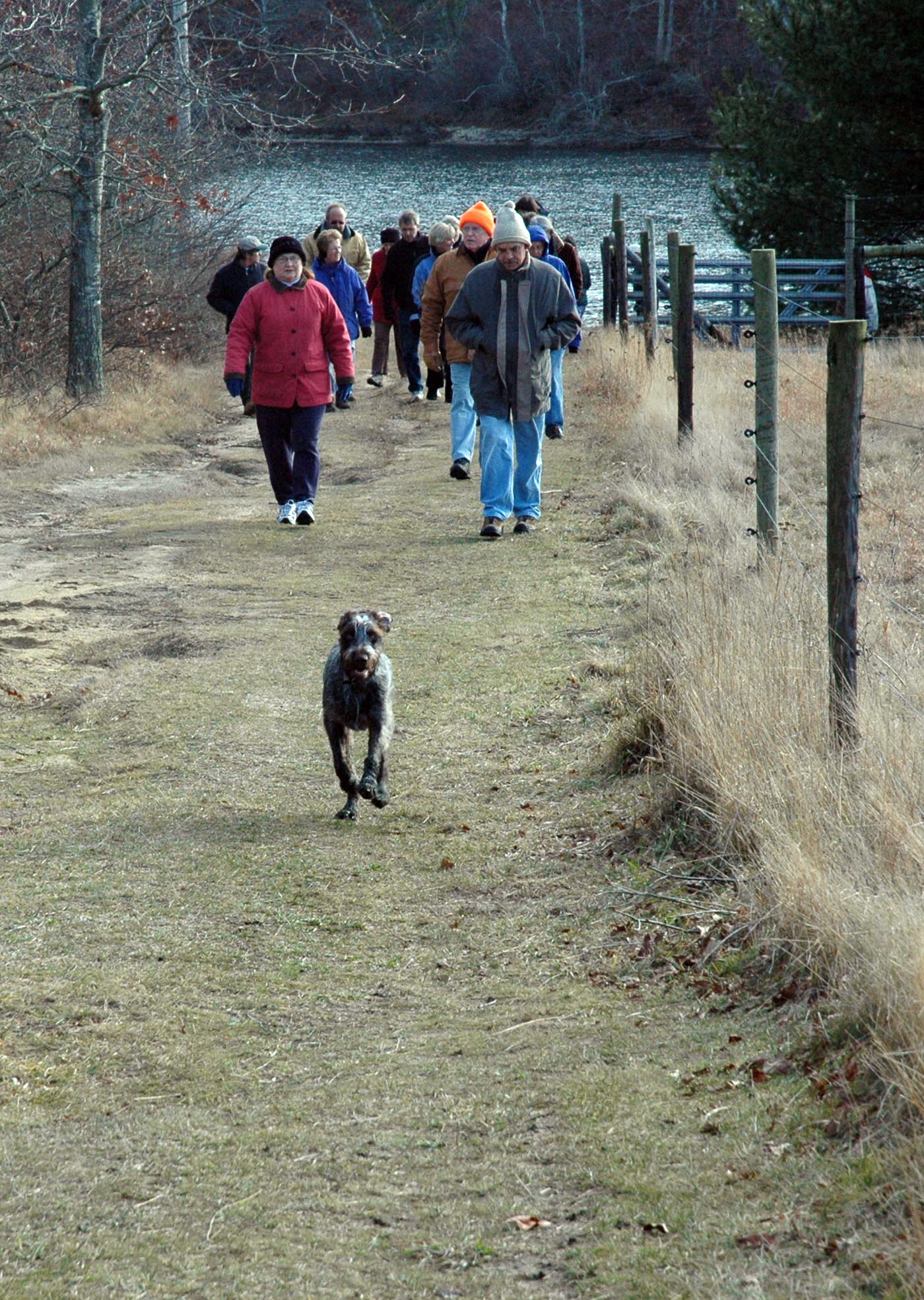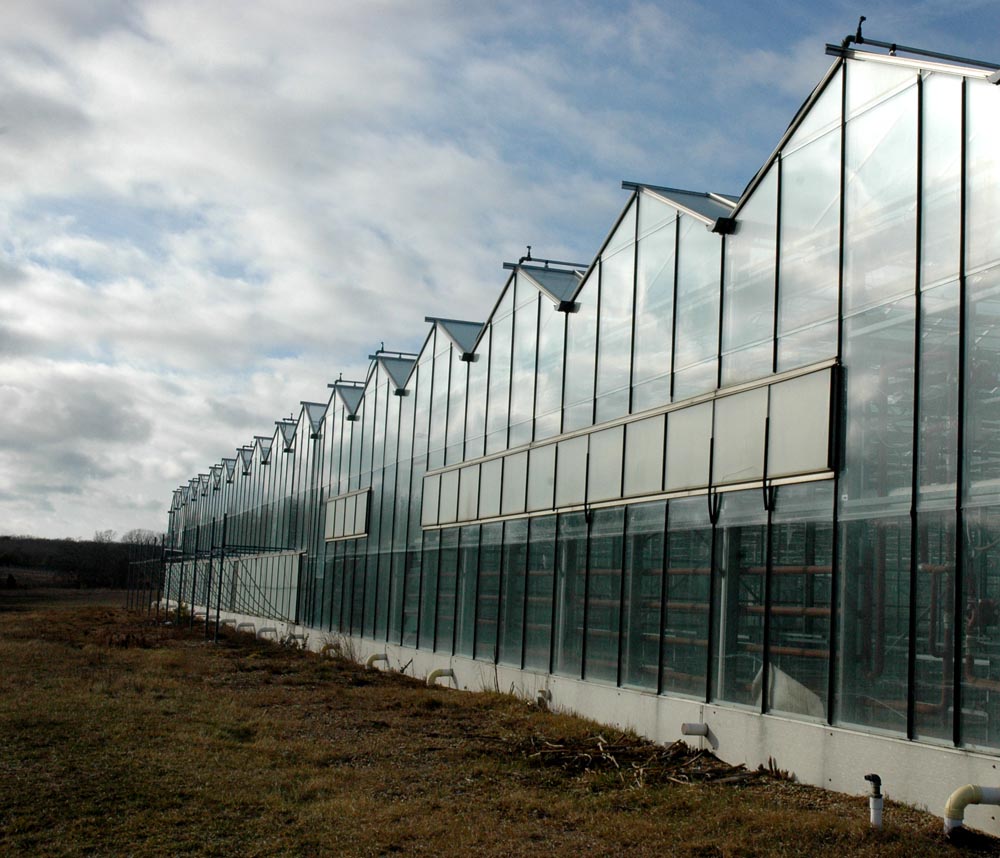Come springtime, the telltale signs of Vineyard farming activity will begin to reappear. One day, the fields are lifeless, the next, tractors are out and the soil has been tilled. Before too long, farmhands dot the fields picking berries and greens and juicy tomatoes. The farm stands fill up, parking at the farmer’s market is nowhere to be found, and on it goes until the last pumpkins, squash and apples are harvested.
For now, Island farms may appear slow, but the work continues all winter. “It’s a huge planning time,” said Ali Berlow, executive director of the Island Grown Initiative. “It would be like the home gardener sitting down and looking through seed catalogs to decide what to plant.”
The winter months are important ones for the farmer. With trees bare and the afternoon sun lingering in the sky a little while longer, winter also is the perfect time to get outside and see the farms firsthand. This winter, the Vineyard Conservation Society is providing the opportunity to do so. Their long running winter walk series takes place this year on three winter Sundays at three Island farms.
“The winter is the time when people are eager to get out and see the protected properties on the Vineyard,” said Brendan O’Neill, executive director of the society. “The leaves are off the trees so you can see the topography. You can gain an appreciation of the land and its features.”
In years past, the nearly 40-year-old walking program has taken off-season hikers to the Aquinnah tribal lands and along Island ponds. This year, the society chose to stay on the farm. “With the interest in locally grown food, we thought, ‘Why don’t we walk farms?’” said Mrs. Berlow, who also sits on the conservation society’s board of directors. “Not everyone gets to walk farms. Especially in the summertime, farms are busy places. It’s a nice time of year to see that down time.”
This past Sunday, as afternoon clouds rolled in casting shadows over a sparkling January morning, cars pulled along the bumpy road leading in to Thimble Farm. Eager walkers milled about in hats and gloves, ready to start off on the first walk of the winter series. In February, the society will lead a hike around Seven Gates Farm and in March they will head to North Tabor Farm in Chilmark. Each farm highlighted in the series has land which has been preserved and protected through Island land conservation groups.
Thimble Farm, which a private buyer recently purchased in order to preserve the land for working agriculture, is home to the Island’s first Community Supported Agriculture (CSA) operation. The property spans 43 acres, nearly 33 of which are prime for farming. In 2000, the Martha’s Vineyard Land Bank bought the development rights to Thimble Farm through an agricultural preservation restriction, a move which ensured the land will remain in agricultural use. “Agricultural preservation is part of an effort at protecting not just prime agricultural soils, but also family farms, the people on the land and the pastoral vista,” Mr. O’Neill said.
After he welcomed the crowd on Sunday, Mr. O’Neill handed the reins over to Andrew Woodruff, owner of Whippoorwill Farm in West Tisbury and the creator of the Vineyard CSA, an organic farm cooperative with 400 members. Mr. Woodruff’s eyes were bright and his smile wide as he looked out over the fields around him and the greenhouse beyond. For the past three years, Mr. Woodruff has leased a portion of the farm to run his CSA operation. As a result of the purchase, finalized this winter, he is now free to sow, plough and harvest as much of the land as he can.
Mr. Woodruff started along the old farm road, but stopped only a few hundred yards down. “Here along the edge of the moraine, the soil is rocky and full of clay,” he told the group, numbering more than 30. “The deeper in you go, it gets sandier and lighter.” Mr. Woodruff plants dark, leafy greens in the rocky dirt and carrots in the sandy parts and often, while working, uncovers arrowheads from days past. Perhaps the relics are signs of Native Americans who, years and years ago, worked the same land.
The walkers continued on down the path, which the land bank created to trace the perimeter of the farm. To the right, in the distance, lay Chicama Vineyards. To the left were fields left brown and fallow by the cold weather and straight ahead sat wetlands. “It’s not where you’d expect to find a swampy pond,” said Mr. Woodruff, pointing to the marsh. Further along, a small pond — a kettle hole, said Mr. O’Neill — came into view. Known as Little Duarte’s, it is a distant cousin to the larger one on Lambert’s Cove, he told the group.
The walk concluded on Sunday at the farm greenhouse, a structure built when Bencion and Patricia Moskow, former Boston lawyers, owned the property. The Moskows purchased the farm in 1982 from David Douglas who had grown corn there. Many many years earlier, Island farmer Elisha Smith worked those same fields.
The Moskows opened their farm to the Vineyard community in 1984. They grew berries and invited the public to come and pick their own. “We decided to grow a happy fruit,” Mr. Moskow said this week from his West Tisbury home. “We wanted a place where kids could go in and pick a berry and get red all over their face right in the field. People enjoyed it. It was an event rather than going to the grocery store to buy your veggies.” The Moskows grew melons and blackberries too, flowers and then, with the construction of the state of the art greenhouse some have called a technological wonder, hydroponic tomatoes.
In the time since the Moskows sold the farm in 2002, the 40,000 square foot greenhouse gradually has fallen into disrepair. Just weeks ago, barren tomato vines still scattered the floors and a complex series of pipes, once used to pump nutrients to the plants, went unused. As he led the group inside on Sunday, Mr. Woodruff could have been walking on air. As a result of the purchase, he can now use the place, to which he was never granted access under the conditions of his lease.
Mr. Woodruff had spent the week prior clearing the debris from the building and on Sunday, the walls shone. With the sun streaming in and the fields stretching out as far as the eye could see, he explained his plans to use the space to start the strawberry season even earlier and to grow organic tomatoes and basil. Bags of soil sat waiting outside the doors.
“I loved it,” Mrs. Berlow said afterwards. “I could really get an intimate experience and really see the property beyond just picking up my CSA share and going off with it. I’m not a farmer, but through Andrew’s eyes, I could look out at the fields and see what I would plant and where. They did not look fallow, but full of life.”







Comments
Comment policy »